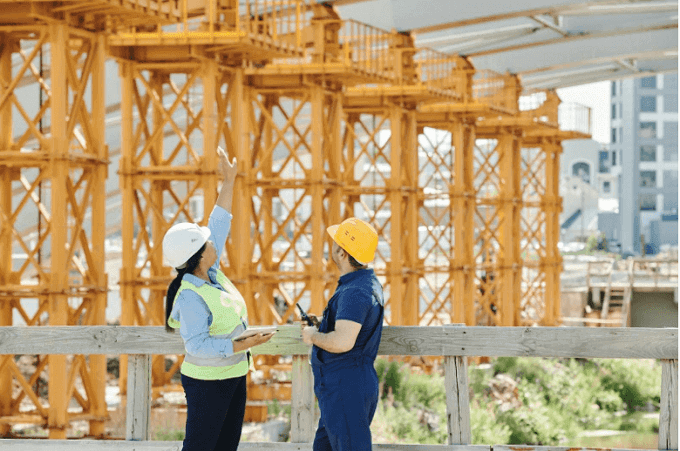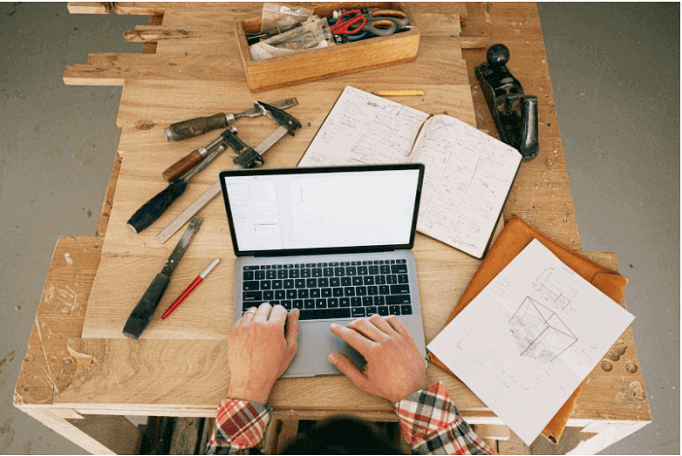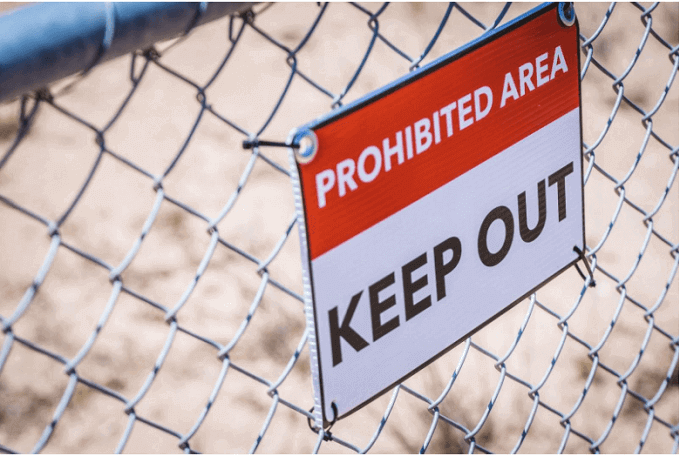Construction sites are dynamic environments with inherent risks that require careful attention to safety. To mitigate potential hazards, incorporating advanced technologies such as AI for construction safety can significantly enhance risk management practices.
This article will explore five common construction site hazards and provide insights into how AI can be leveraged to prevent accidents and ensure a safer working environment.
Falling Hazards
Falling hazards pose a significant risk on construction sites. Falls can result in severe injuries or fatalities, Whether from elevated platforms, scaffolding, or ladders. To address falling hazards:
- Use AI for construction safety to monitor workers’ movement and detect unsafe behaviors in real time.
- Implement advanced video analytics and computer vision systems to identify individuals without proper safety gear or working in hazardous areas, triggering immediate alerts.
Additionally, implementing smart safety helmets with built-in sensors and AI capabilities can help track workers’ locations, detect falls, and send automated distress signals for prompt assistance.

[source: pexels.com]
Struck-by Hazards
Struck-by hazards occur when workers are hit by falling objects, moving equipment, or vehicles on construction sites. To mitigate struck-by hazards:
- Use AI-based object detection systems can monitor the site in real-time and identify potential hazards, such as unsecured materials or equipment.
- Utilize IoT sensors and AI algorithms – workers and heavy machinery can be equipped with collision avoidance systems, providing warnings and automatic braking to prevent accidents.
Also, by Implementing AI-powered video surveillance, you can help monitor blind spots and identify unauthorized access to high-risk areas, minimizing the risk of struck-by accidents.
Electrocution Hazards
Electrocution hazards significantly threaten construction sites due to power lines, exposed wiring, and electrical equipment. To address electrocution hazards:
- Use AI-enabled drones to inspect power lines, identifying potential faults or damage before workers are exposed to electrical hazards.
- Use AI-based thermal imaging technology to detect overheating electrical components, preventing potential fires and shocks.
Training workers on proper electrical safety protocols and AI-powered virtual reality (VR) simulations can also help improve their understanding of electrical hazards and safe work practices.
Caught-in/Between Hazards
Caught-in/between hazards occur when workers are caught, crushed, or compressed between objects or equipment. To mitigate caught-in/between hazards:
- Use AI for construction safety to monitor the movement of heavy machinery and detect workers’ proximity, triggering warnings or automatic equipment shutdown to prevent accidents.
- Implement wearable devices equipped with AI algorithms and motion sensors to detect sudden movements or abnormal positions, alerting workers to potential hazards.
- Use AI-based computer vision systems to identify possible pinch points or hazardous areas, providing real-time visual warnings to workers.

[source:pexels.com]
Respiratory Hazards
Construction sites often expose workers to respiratory hazards such as dust, chemicals, and hazardous fumes. To address respiratory hazards:
- Use AI-powered air quality monitoring systems to continuously monitor and analyze the air for harmful substances, providing early warnings and enabling prompt mitigation measures.
- Implement wearable sensors that detect and monitor workers’ vital signs to help identify any adverse health effects caused by respiratory hazards.
- Utilize AI algorithms to analyze historical data to identify patterns can assist in developing effective preventive measures and safety protocols.
Falling from Heights
Falling from heights remains a significant hazard in construction sites, especially when working on elevated platforms, rooftops, or scaffolding. To prevent falls from heights:
- Utilize AI-enabled video surveillance systems with real-time monitoring capabilities to detect unsafe behaviors, such as working without fall protection equipment or inadequate safety measures.
- Implement smart wearables or harnesses with integrated sensors that can detect sudden movements or irregularities in body position, immediately alerting workers and supervisors.
- Deploy drones with AI-powered imaging technology to conduct inspections and identify potential fall hazards, such as unstable structures or unsecured edges.
Overexertion and Musculoskeletal Hazards
Overexertion and musculoskeletal hazards often result from repetitive tasks, manual lifting, or working in awkward postures. To address these hazards:
- Use AI-powered wearable devices to monitor workers’ movements and provide real-time feedback on proper body mechanics and ergonomics.
- Implement exoskeleton technology that supports and augments workers’ strength, reducing strain on muscles and joints during physically demanding tasks.
- Use AI algorithms to analyze work processes and identify automation or equipment enhancements opportunities to reduce workers’ physical burden.
Hazardous Material Exposure
Construction sites often involve handling hazardous materials, such as chemicals, asbestos, or toxic substances. To mitigate the risks associated with hazardous material exposure:
- Utilize AI-powered sensors that can detect and monitor the presence of hazardous substances in the air, soil, or water on construction sites.
- Implement real-time data analysis and predictive modeling using AI algorithms to identify potential exposure risks and develop preventive measures.
- Integrate AI-based training programs that educate workers on proper handling, storage, and disposal procedures for hazardous materials.

[source:pexels.com]
Conclusion
Construction site hazards can be effectively mitigated by leveraging advanced technologies like AI for construction safety.
By addressing falling, struck-by, electrocution, caught-in/between hazards, and respiratory hazards, construction companies can create a safer working environment for their employees. Integrating
AI-based solutions enhance real-time monitoring, early detection of potential hazards, and prompt response, ultimately reducing accidents and ensuring the well-being